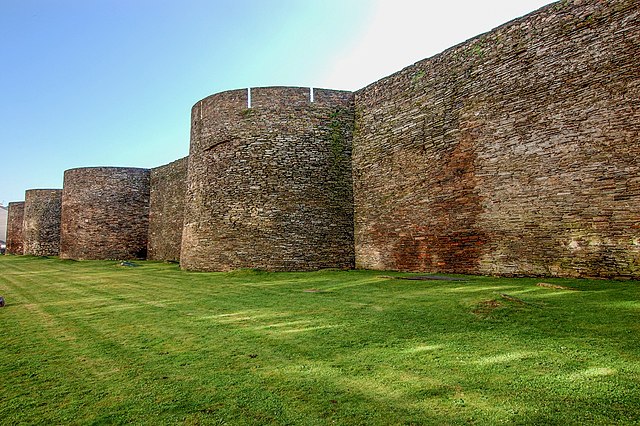Zor
More of a Zor than You
In this scenario, in 1591 a strange device is found in Tottori Domain by farmers digging in the mud which looks like three plinths about 2 meters tall facing each other on an equilateral triangle triangle 16 meters to a side with a forth plinth six meters away made of some strange metal. When someone touches the forth plinth, it shows a holographic globe with sixteen icons scattered about the planet. Of these fourteen are black while two are Blue. One over a map of japan, one in Spain in Inland Galicia (though with a few odd characters nearby). When someone puts their hand through icon on Galacia, the three plinths come to life, glow, fire off a few beams of light into their center and then move apart, opening a vertical triangular wormhole about 12 meters to a side connecting these two locations. One of which is in a forest far away from anyone. A similar device is found in the mud on the other side, but the control plinth is inoperable. After about two hours the portal closes, but it can easily be restarted. The portal can also be shut down by putting one's hand onto a red triangle icon. Some samurai scout out the area and find a village within a few hours ride. Some villagers (including a priest and a local knight's family) are taken back for questioning, in which the Japanese manage to work out where the other side is. The local Daimyo then shuts it down for the time being.
Word of this gets to Toyotomi Hideyoshi, who is intrigued by the prospects that this has. As such he makes an adjustment to his invasion plans which involves crossing out the words "Korea" and replacing them with "Spain". He musters up his armies of 150,000 battle hardend Samurai and Ashigaru and prepares to have them march through the portal. He also has a small castle built around it on the Japan side including some fortifications around the control panel so that if worse comes to worst the gate can be cut so that Spaniards can not get back. He also plans on building a fortress on the Spain Side once he can get enough local peasants to do so.
Choson Korea and Ming China give zero fucks about this whole kurffle. The Prodestants will view this event as god's wrath brought down on the papists for their corruption.
What happens?
Zor
Word of this gets to Toyotomi Hideyoshi, who is intrigued by the prospects that this has. As such he makes an adjustment to his invasion plans which involves crossing out the words "Korea" and replacing them with "Spain". He musters up his armies of 150,000 battle hardend Samurai and Ashigaru and prepares to have them march through the portal. He also has a small castle built around it on the Japan side including some fortifications around the control panel so that if worse comes to worst the gate can be cut so that Spaniards can not get back. He also plans on building a fortress on the Spain Side once he can get enough local peasants to do so.
Choson Korea and Ming China give zero fucks about this whole kurffle. The Prodestants will view this event as god's wrath brought down on the papists for their corruption.
What happens?
Zor




